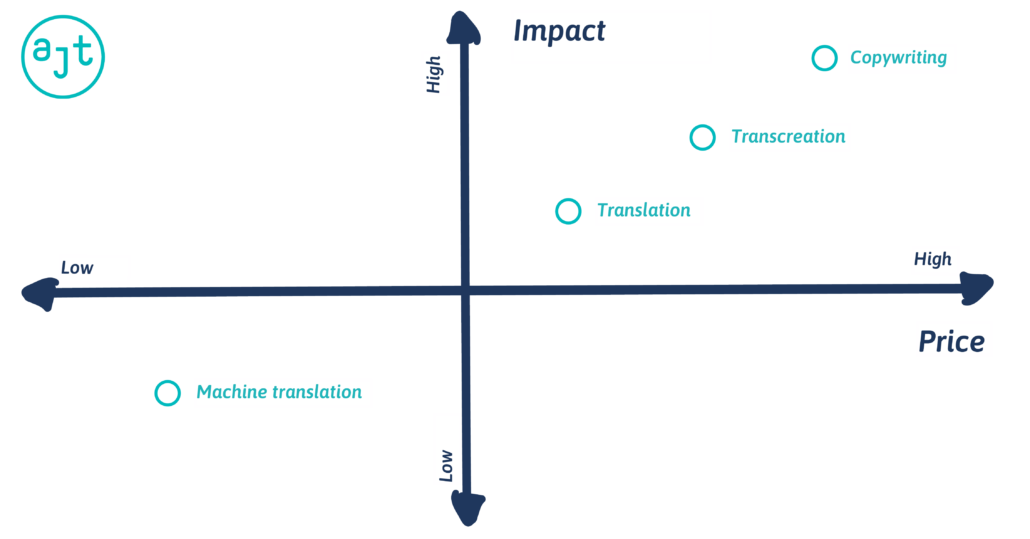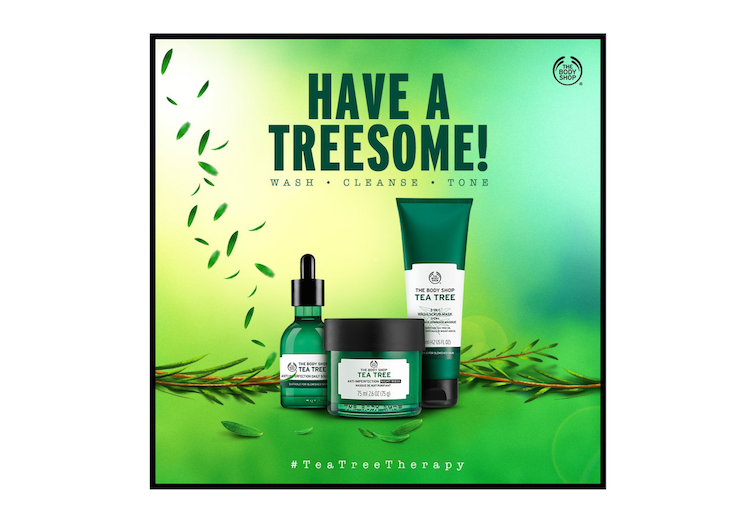The cost of transcreation services – and when to pay for them
If you’re looking to launch your products into a new European market, you’ve probably come across the term “transcreation services” before.
In a nutshell, transcreation is the process of translating not just the words of your marketing copy to another language, but also translating the emotions, ideas and concepts behind that message to evoke the same feelings in different cultures. It’s about making sure your marketing is not only understood, but that it also makes the right lasting first impression in every language.
But if you’ve come across transcreation services, you’ve probably also seen the elephant in the room: Transcreation is more expensive than a translation project, and it’s not always easy to know if it’s a cost you need to pay.
What makes transcreation more expensive? Is it always the better option if you have the budget, or are there times when translation is the best route forward? And what are the costs of not using transcreation services when you should?
Unlike translation, transcreation isn’t priced by the word
One of the difficulties that comes with understanding the cost of transcreation is that agencies price transcreation and translation very differently. Translation services are usually priced by the word, which makes them very easy to budget for – if you have a 600 word press release to translate, it’s just a simple calculation.
Transcreation on the other hand is usually priced with an hourly rate, or sometimes a project rate, and that’s harder for brands to figure out. The reason for that is the very different kind of work that goes into a transcreation project compared to a translation project.
What you’re paying for with transcreation
Take a slogan like Nike’s “Just Do It”, for example. If Nike decided they wanted to localise that slogan for non-English speaking markets, a literal translation charged by the word wouldn’t cost much at all.
But transcreation isn’t about finding the direct French or German translation for those three words. It’s about translating the concept behind “Just Do It” – the idea that by owning a pair of Nike shoes you can get out there, tackle whatever you’ve been putting off and make it look easy while doing it. In English, “Just do it” is also a molossus – three stressed syllables – giving the phrase a poetic and motivational spin, reaching just the right spot in the English-speaking world’s unconscious.
Does “Just Do It” carry that same emotional message in every language? Or will the phrasing or the words need adjusting for each market? The direct French, for instance, “fais-le simplement” is unlikely to carry the same amount of marketing weight.
The cost of a transcreation project isn’t about the words you use, but the effort involved. When it comes to transcreation, you need to absorb so much more information around what a campaign is trying to achieve and who it’s meant to reach.
As well as working on the copy itself, a transcreator will also be able to advise on imagery and cultural adaptation, making sure the idea hits the mark on every level.
A couple of transcreation examples
To illustrate just how much thinking goes into a transcreation project, we asked our team to come up with a German equivalent for Bodyshop’s strapline “Have a treesome”. Here’s what a transcreation could look like:
| English original | German transcreation | Back translation |
|---|---|---|
| Have a treesome! | Unschlagbares Tree-o | Invincible treeo (trio) |
While the English pun creates a slightly cheeky undertone, sexual references can easily seem more explicit and vulgar in German, so our team chose not to replicate it. Instead, they tried to keep the focus on the triple use of the main ingredient tea tree oil. The word play on “tree-o” and “trio” preserves the light-heartedness of the source and appeals to the younger target audience by referencing the English product name.
And here’s another transcreation example for premium cosmetics provider Beauty Pie:
English original German transcreation Back translation
Our prices make other brands blush. Unsere Preise bringen andere Marken zum Erröten. Our prices make other brands go red in the face/blush.
Overpaying for luxury beauty? There’s no point.
Preise für Luxus-Beauty muss man nicht auf die Spitze treiben. You don’t have to carry prices for luxury beauty to extremes (“to the tip”)
Luxury beauty doesn’t have to be a squeeze. Andere tragen preislich dick auf – wir nicht. Others are laying it on thick with their prices - we don’t do that.
In some cases, translating creative taglines can be straightforward – if you’re lucky, an English idiom will align almost perfectly with your target language phrase and it conveys the same image. The reference to blushing as a verb and blusher as a product translates well into German, yet a more literal translation for the other two phrases in this example would have lost the semantic reference to the visuals. So instead, the team had to look for turns of phrases that both communicated the price point of the product and also alluded to the imagery – the tip of the eyeliner pencil and the cream in the tub.
The cost of transcreation vs. the cost of native marketing
You could go one step further and pay a marketing agency within a new market to come up with an entirely new ad concept. At this point, though, you’re spending far more than you would on transcreation services.
More often than not, transcreation services sit in the sweet spot between translating an existing marketing concept from one language to another and making a new concept from scratch.
As transcreators, we’re working from the original concept, and by seeing it in its original language first, we can better understand the ideas and emotions behind the campaign and how to replicate those in other languages. It simply takes less time and less money than hiring an agency to come up with something totally new.
When to pay for transcreation (and when not to)
One of the important things to remember about transcreation services is that they’re not the right answer for every piece of copy you need to localise. Which localisation service you choose will depend on how valuable the copy is and the level of impact the localised copy needs to make.

This matrix illustrates the correlation between pricing and target market impact for localisation services. While a machine translation might be very cost-effective, it’s likely to have very little impact on the readers. In contrast, transcreation is more costly, but is likely to have a much higher impact in the local market.
Transcreation works best when there’s a layer of creativity needed
For example, you wouldn’t ask for transcreation of an ingredients list – that just needs to get the information across, not set the world on fire with a brilliant turn of phrase. Translation will do fine for describing the percentage of raisins and oats in muesli.
However, if your ingredients list is accompanied by a short paragraph of copy that conveys the brand’s personality, transcreation will work far harder for you. Transcreation gives you the opportunity to tap into things like cultural references or humour and pop culture that are specific to each market.
Transcreation works best when the creative copy is short form rather than long form
For one, if you were to transcreate marketing content like a blog post, the cost would be fairly eye-watering. But with something that long, you’re not trying to win customers over in just three or four words. You’re trying to weave a narrative thread while again relaying information – and while you might need to make adjustments to localise phrases or idioms, this again leans more towards the realm of translation.
Transcreation works best when the copy needs to convey emotion more than information
We’re talking about things like slogans and taglines for product ranges, or product packaging copy, where you only have a few words to play with and need them all to land in front of your customers with the maximum impact.
If you opt for a literal translation of your marketing concept and it doesn’t land, it can leave you in a difficult position. From a brand point of view, building loyalty and getting growth in your new market can be an uphill struggle if your potential customers’ first impression is that your brand doesn’t really understand them.
The cost of skipping it over transcreation
When translation doesn’t deliver, the solution is often to engage transcreation services. However at this point you’ve spent twice – once for a translated concept you can’t use, and once more for a concept that you can. You’re better off opting for transcreation first if it’s more likely to give you the customer resonance you need.
Interested in finding out more about how transcreation and localisation can help with taking your products into the EU market? Read our article on why your business needs transcreation service, or book a localisation clinic.

